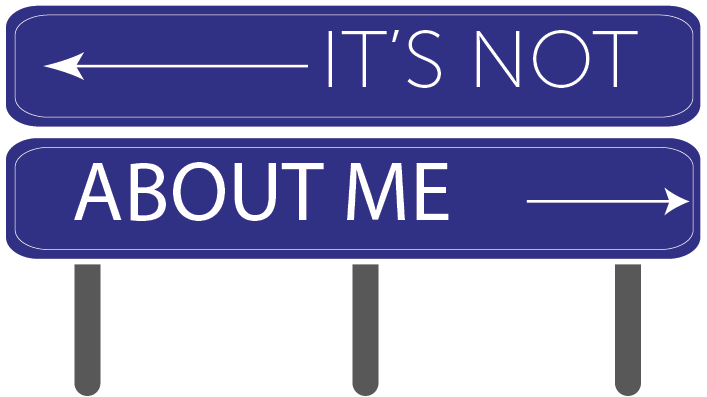It's Not About Me3 Steps to Prove the Communication is Not About You

3 Steps to Prove the Communication
is Not About You
The three pillars of communication: It’s critical. It’s hard. It’s not about me.
Two weeks ago, we shared some tips on demonstrating you know communication is critical and last week we gave you a few more tips, because we know that communication is hard.
This week, three tips to prove that communication is not about you. If you would never give someone a gift you know they wouldn’t like, why communicate with them in a way that doesn’t work for them?
1 - Inquire / Ask
In some way, make a deliberate, transparent, and intentional effort to FIND OUT about someone else’s communication preference. Observe them, pay attention to them, pick up clues from them. Do they usually start their day with an engaging story? Then they probably enjoy stories. Do they tend to give you time to think before putting you on the spot with a question? Then they probably like to have time to think through their answers, too. Do they speak in bullets and avoid extraneous words? Then they probably appreciate that too when you’re communicating with them. But here’s the thing, you don’t know for sure unless you ask. How about their preference for text, email, phone, drop-by, or meeting…if you’ve never asked their preference, then you’re just guessing. You might guess right, but wouldn’t it be easier to make time to find out what they prefer?
2 - Try it
So here we’ve got to be intentional too. Make some deliberate and intentional effort to adjust your own approach, set aside your own preference or natural inclination, and make a deliberate effort to give them what they like best. It’s like a gift – when you give someone a gift, you give them the gift that THEY would want, not the one you would want. If you’re allergic to coconut, then coconut-crème filled chocolates – even if they’re hand-dipped from the finest chocolate in town – just aren’t the right gift for you. When I give you a gift, I should give you what you want, what you appreciate, what you love. Here’s a simple example: what if you want to bring birthday treats, and the person you’re celebrating really doesn’t like cake or sweets. Then don’t bring cake. Bring something they do like.
3 - Get Feedback
Now that you’ve tried something, it’s especially useful to find out how well it worked. Maybe it didn’t work perfectly well, and you just need to practice a bit more to make it smoother for next time. Maybe you tried and, well, it bombed and a whole new tactic would be better for next time. Or, maybe you tried something that worked well, and the other person is so ecstatic about how helpful it was, that they are already using you as an example for others to help communicate with them more effectively. Either way, if you ask them, you have a better chance of knowing if you hit the mark and how to be even more effective next time. |
|

